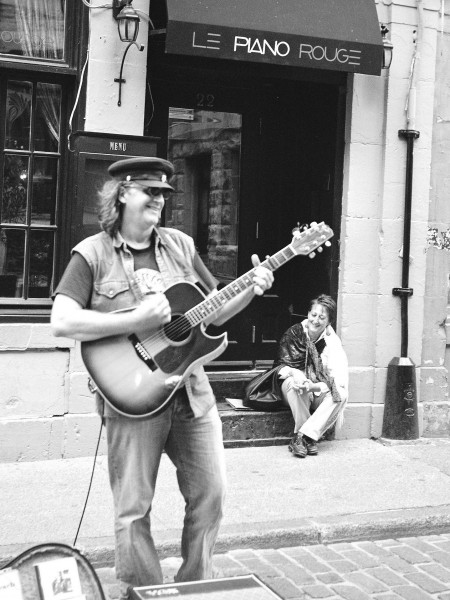
Le Piano Rouge
Seizing the moment is critical. Montreal’s financial and Old Town districts are alive with street musicians, artists, and just plain quirky character of all descriptions. Wander the streets with you camera in hand, shutter cocked and aperture set for sun or building shade, and be ready!
If you can, make your image tell a story – or better yet, make the viewer begin to tell his own story. I managed to catch the energy of this busker by being prepared to shoot in an instant. He was just setting up to play, so an interfering crowd had not yet gathered, and I managed to connect both him and his amused and admiring female friend in the background. With this connection, the image begins to tell a story, and we begin to wonder about them. Is she his girlfriend? Or just a passerby who stopped on the steps of Le Piano Rouge to watch? Will they go inside in the evening to share an intimate dinner from his day’s busking? These questions draw us in, make us linger, and make the picture greater than the busker himself.
Here, an eye level finder is a must. Much as I love my cameras from the 19-teens and twenties, the tiny finders of that era, designed for waist-level use, are almost impossible to use accurately or quickly in a situation like this. Most miniature plate cameras, and and a few of the 1920s roll film cameras, have folding wire finders that can be used for sports photography. These function well in action situations, and have the added advantage of attracting interested bystanders, one of the most rewarding aspects of vintage camera photography. Furthermore, most subjects are happy to be photographed by someone with such an unusual camera!
As with most of this Montreal sequence, this was shot with the Ensign 820 with the Ross Xpres lens on Ilford XP-2 at f/11 and 1/200 sec. The image required only local contrast enhancement and minor adjustments for brightness, contrast and Curves despite the harsh summer light.